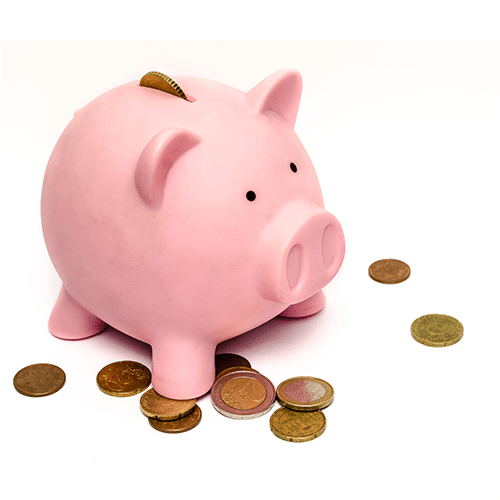How to start investing with P10,000

Source: http://www.abs-cbnnews.com/business/03/31/14/how-start-investing-p10000
Are you thinking you need more money before you can start investing? That’s a myth we’re happy to bust for you.
No amount of money is too small if you are ready to make your money work harder for you starting today and begin investing. With as little as P10,000, you can have a variety of options of where to park your funds to help you achieve your financial goals.
Thanks to a more robust investment environment today, many financial products for retail investors can be had for P10,000 — from money market placements, mutual funds, unit investment trust funds (UITFs), equities, to name the most popular ones.
You may think that P10,000 will not get you much, but this is not true. Consider this: If you put it into a high-yielding instrument, and then let it compound over an extended period of time, you may find that the initial amount has grown substantially. If your investment horizon is long, compounding can certainly work wonders for you.
However, investing on your own is admittedly not easy to do. Choosing different investment instruments and creating a personal portfolio are time consuming and require a good appreciation of financial markets, instruments, and the investment environment. Thankfully, there are pooled funds for retail investors that allow you to diversify your holdings even with just a P10,000 investment.
Top of mind are mutual funds and UITFs, which can allow you to invest even with just P10,000. Besides affordability, pooled investments give you the benefit of having a professional finance manager to manage the fund. Because they are liquid, you also enjoy the advantage of being able to withdraw your funds when the need arises, subject to fees in some cases.
How do they work? Mutual funds and UITFs are invested into various investment instruments to meet different financial objectives, e.g., some may prefer to preserve their capital while some may want aggressive growth. There are different kinds of funds to meet these varying needs. For instance, money market funds will be invested in short-term debt instruments; bond funds will be invested in government or corporate bonds; balanced funds will have a mix of stocks and bonds; and equity funds will be invested in shares of stock.
A mutual fund is an investment company that pools your money along with the money of different investors and invests these in various instruments. The mutual fund company issues shares representing your holdings in the fund. You will be issued a certain number of shares by the mutual fund based on the amount of your investment. The price of each share is called the net asset value per share (NAVPs). All shares in a mutual fund are traded using the NAVPS, which changes every business day.
When you buy or sell your shares in the mutual fund, this will be based on the NAVPs. If the NAVPS of the mutual fund increases or appreciates, you can sell your mutual fund shares for a profit. In the same way, if the NAVPS of the mutual fund you are invested in decreases or depreciates, you may realize a loss if you redeem it. In the Philippines, mutual funds are supervised by the Securities and Exchange Commission.
UITFs, on the other hand, are sold by banks. You buy units of participation in the fund, whose value is called the Net Asset Value per Unit (NAVPU). This reflects the current market prices of the instruments that make up the UITF. The NAVPU rises or falls depending on the movement of market prices. The UITFs are then invested in a variety of instruments such as corporate and government bonds, money markets, equities, etc., to meet different risk profiles and investment objectives. Since UITFs are sold and managed by commercial banks, these are supervised by the Bangko Sentral ng Pilipinas.
Mutual funds and UITFs vary on a few administrative matters, such as organizational structure, transaction fees and taxes.
Here are some points to remember before putting your P10,000 in a pooled investment fund:
1. Whatever the size of your investment, and regardless of your financial status, it is always important to define your financial objective and your appetite for risk. This will guide you in defining the appropriate investment strategy that takes your individual financial profile into consideration. Knowing this, you can then choose the right fund that is closely tailored to your profile and needs.
2. A long-term investment horizon will allow you to maximize your gains.
3. Take the time to study the different investment instruments that the fund is invested in. Look at how the portfolio is allocated among different asset classes to gain a better understanding of what you got.
4. Top up. If you have extra funds, it is always a good idea to add to your initial investment to help you meet your investment objectives faster.
5. Look at management and transaction fees. Fees vary among different funds and among financial institutions. There are redemption fees as well. Take these into consideration when deciding to buy or sell your funds.
6. Look at the track record of the fund manager or the organization managing your money. While past performance is not an indicator of how your fund will perform in the future, it gives you an idea if your fund manager is capable of meeting investment targets. Regular reports about your fund’s performance should be made available to you.
7. Note that pooled investments are usually not covered by the Philippine Deposit Insurance Corporation. Even those funds that are invested in low-risk instruments carry a measure of risk. If capital preservation is your topmost objective, then reconsider if pooled investment are for you.